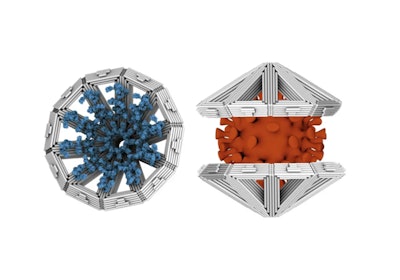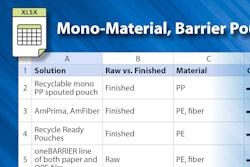
MONFERRER ET AL
A recent article from The Scientist discussed the strategy of using “DNA origami” to trap and encase large viruses. The method aims to intercept viruses like SARS-CoV-2, influenza A, and Zika before they infect cells. The researchers behind it used the DNA origami to engineer strands of genetic material into cage-like structures around larger pathogens. Though the initial study focused on binding to viruses in vitro, they hope to one day use them to clear viruses from the body.





















